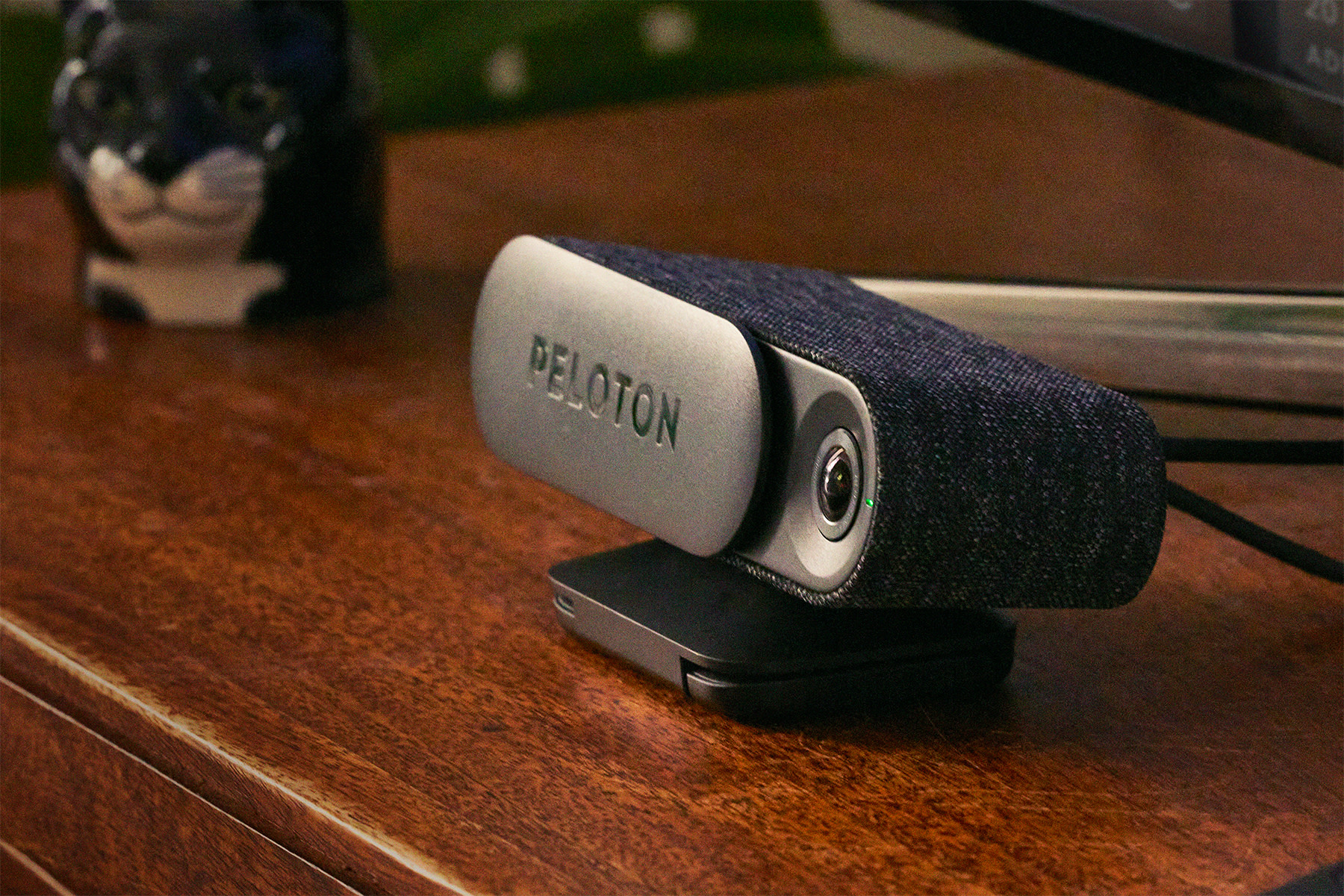
Why Peloton Guide Is Different Than Other At-Home Strength Training Devices
A Guide newbie tries out our TV-connected strength device for the first time.
By Karen Asp•
Just when you thought Peloton couldn’t up its game more, out comes the AI-powered Peloton Guide. I admit I was skeptical when I got it. Although I use the Peloton App almost daily, I’m not a technology buff and I prefer not having to press a lot of buttons to get into a workout. But more than anything, I’m curious what it might do to spice up my workout program. I’ve been a home exerciser since long before the pandemic made exercising at home trendy, and while I’m intrinsically motivated, I always welcome anything new.
My verdict? Peloton Guide gets my vote if you want to optimize your strength training. Read on for more about my experience.
Getting Set Up
It doesn’t take much effort to hook Peloton Guide to the TV. Fortunately, my TV quickly identifies the Guide, which I’ve placed on a shelf so the camera can see my workout space. Of course, I do have to upgrade my membership from the monthly App price to use the Guide, but the process goes smoothly.
The first thing I do is toggle through a tutorial. I learn how to operate the remote control (which fortunately has minimal buttons), how to control Peloton Guide with my voice (you can, for instance, tell Guide to pause or rewind), and what the rep and motion trackers do.
As its name implies, the rep tracker counts your repetitions. Meanwhile, the motion tracker senses when you’re moving. A small tear-drop-shaped icon on the screen logs your progress by filling in as you move. When you stop moving, it stops, which intrigues me. How accurate are these trackers and what might they add to my workouts? Turns out, a lot.
My First Classes With Peloton Guide
After I create my profile, I’m taken to the home screen, which is broken down into several sections. At the top are your seven-day activity stats, including how many workouts you’ve completed, how much total time you’ve exercised, and how many total calories you’ve burned.
Then it shows any programs—which are essentially workout series—you’ve started. Another section titled “Based On Your Body Activity” is a curated selection of recommended workouts. Other sections include popular classes, a list of instructors (click on a specific person to see all of their classes), live and upcoming classes, and finally, rep tracking classes.
There’s also a main menu, which allows you to easily navigate to the home page, your profile, classes, programs, collections, and settings. I take time to toggle through all of this, but given all of the class choices, I’m a little overwhelmed to start.
I’m anxious, though, to try the Rep Tracking classes, so I look first under the “Classes” section. There are 11 categories of workouts designed for Peloton Guide, including yoga, cardio, cycling, and Tread bootcamp. You can filter through them by length, instructor, and more, as you would if you were using the app or Peloton cardio equipment, but note that only strength classes have rep or motion tracking.
I choose a lower body Rep Tracking class from one of the three collections and answer questions about what weights I’m using. Once the class comes up, I see not only the instructor but also the view from the Peloton Guide’s camera, and I love this feature (note, though, that you can turn this off). I can see myself do the moves but more importantly, I can check my form against my instructor’s form and make corrections as needed. Through the camera, Guide also counts my reps, and surprisingly, it’s 100 percent accurate.
Next, I do a strength class with the movement tracker, and I love this one too. While I miss the rep counting, I become obsessed watching the icon fill up. I don’t want to disappoint it, so I make sure I keep moving, and again, it’s spot on.
What I Love About Peloton Guide
I’ve used the AI-powered Peloton Guide for almost a month now, and it’s done exactly what I had hoped it would do: add even more variety to my strength workouts.
Yet it’s gone a step further and pushed me to work harder, thanks in large part to the trackers. While other devices track reps, this is the first I’ve seen a movement tracker like this, and both trackers motivate you to progress, perhaps lifting heavier, doing more reps, meeting challenges, or hitting what instructors call streaks.
Another unique characteristic is Body Activity, which I also love. After each workout, illustrations of the human body pop onto the screen. Muscles I’ve worked during the workout are highlighted while the rest are left blank. The Guide then offers customized recommendations for workouts to hit the muscles I have left to train, which helps me plan my weekly workout schedule.
Whether you’re undertaking strength training for the first time or have been doing it for years, Peloton Guide holds merit for everybody, as you feel as if you’re working one-on-one with the instructors. It’s like having a personal trainer at the touch of a button—sans the expensive price tag that often accompanies said trainer, of course.
Learn more about how Peloton Guide has improved our Members’ strength training.
This content is for informational and educational purposes only and does not constitute individualized advice. It is not intended to replace professional medical evaluation, diagnosis, or treatment. Seek the advice of your physician for questions you may have regarding your health or a medical condition. If you are having a medical emergency, call your physician or 911 immediately.



